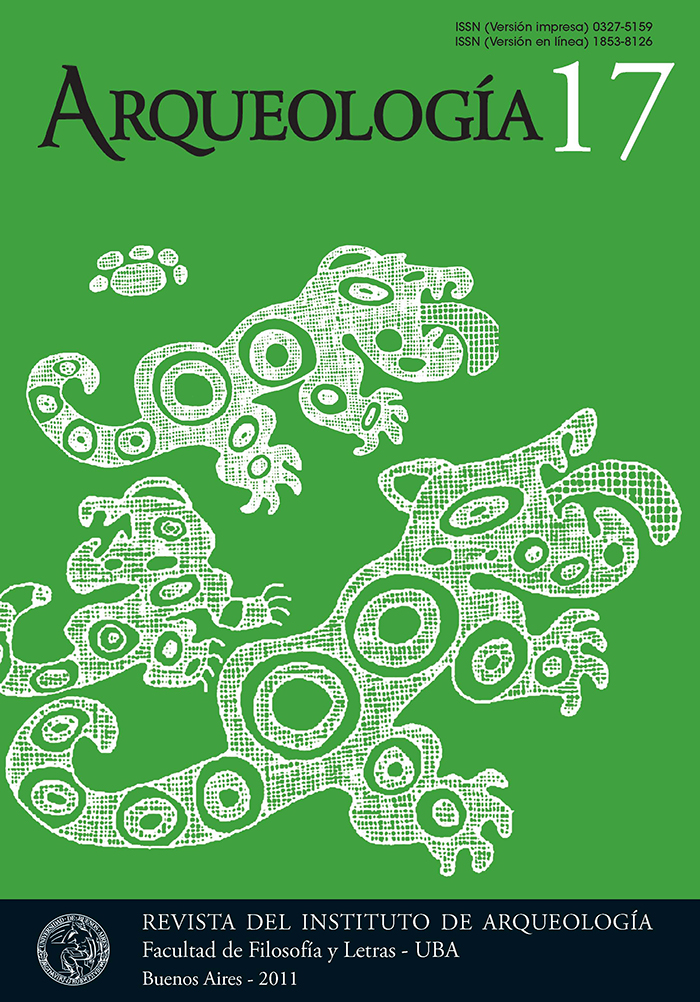Marine <i>vs</i>. terrestrial resources: Archaeofaunal analysis at Cueva del Negro site, north coast of Santa Cruz
Keywords:
Hunter-gatherers, Patagonian coast, Archaeofaunal analysis, Marine resources
Abstract
The Cueva Del Negro site is located in Bahía del Oso Marino, North Coast of Santa Cruz. It presents evidences belonging to a hunter-gatherer settlement site, and its archaeological assemblage includes numerous faunal bone remains, with the wide predominance of marine resources. The goal of this paper is to obtain information in order to understand the role of different faunal resources in the subsistence of the ancient groups that inhabited the zone. To such purpose, a zooarchaeological analysis that include a taxonomic and anatomic determination of the recovered materials, was performed. The obtained results from those studies were discussed with ethnohistorical data as complementary information. We could determine some differences on the exploitation and consumption modes between two large mammals (pinnipeds and camelids). The preliminary studies suggest that it was a group with a broad-spectrum economy, with a predominance of marine fauna, represented by different age classes. Thus, hypotheses on an extended occupation in the coast, are enunciated. The intensive exploitation of marine resources in comparison with the terrestrial resources appears to indicate a preference by the former, leading to postulate a seasonal mobility along the coast and not necessarily to the interior lands.Downloads
Download data is not yet available.
How to Cite
Beretta, M., Corinaldessi, L., & Castro, A. (1). Marine <i>vs</i>. terrestrial resources: Archaeofaunal analysis at Cueva del Negro site, north coast of Santa Cruz. Arqueología, 17, 137-159. https://doi.org/10.34096/arqueologia.t17.n0.1841
Issue
Section
Articles
Authors who publish in this journal agree to the following conditions:
- Authors retain copyright and yield to the journal right of first publication with the work registered with attribution license Creative Commons, which allows third parties to use the published always mentioning the authorship of the work and first publication in this magazine.
- Authors can make other independent and additional contractual arrangements for the non-exclusive distribution of the version of the article published in this issue (p. Eg., Inclusion in an institutional repository or publish it in a book), provided that clearly indicate that the work was published for the first time in this magazine.
- It allows and encourages the author / s to publish their work online (eg institutional or personal pages) before and during the process of revision and publication, as it can lead to productive exchanges and greater and more rapid dissemination of work published (See The Effect of Open Access).





(1)13.png)






1.jpg)
1.jpg)


13.png)
1.png)


(1)1.png)









